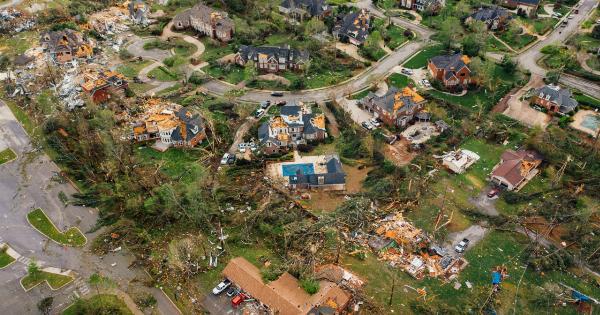Teenage pregnancy refers to the occurrence of pregnancy in adolescents, typically aged between 13 to 19 years. It is a complex issue that involves various social, cultural, economic, and health factors.
In this article, we will delve into the complexities surrounding teenage pregnancy and explore its causes, consequences, and possible solutions.
The Causes of Teenage Pregnancy
Teenage pregnancy can be attributed to multiple factors, including lack of comprehensive sex education, peer pressure, poverty, dysfunctional family environments, and limited access to contraceptives.
Let’s take a closer look at some of these factors:.
Lack of Comprehensive Sex Education
One of the leading causes of teenage pregnancy is the lack of comprehensive sex education in schools and communities.
Abstinence-only programs, which promote refraining from sexual activities until marriage, fail to provide teenagers with the necessary information to make informed decisions about their sexual health. Comprehensive sex education, on the other hand, includes information about contraception, sexually transmitted infections (STIs), and healthy relationships, enabling teenagers to engage in responsible sexual behaviors.
Peer Pressure and Influence
Adolescence is a time of immense social pressure and a desire to fit in. Teenagers may engage in risky sexual behaviors due to peer pressure or a misguided perception of popularity.
The influence of friends and the desire to conform to societal expectations can often lead to unplanned pregnancies among teenagers.
Socioeconomic Factors: Poverty and Limited Opportunities
Teenage pregnancy is more prevalent in socioeconomically disadvantaged communities. Poverty and limited opportunities for education and employment contribute to a higher likelihood of teenage pregnancies.
Financial insecurity and a lack of access to resources often hinder teenagers from making informed choices concerning contraception and family planning.
Dysfunctional Family Environments
The presence of dysfunctional family environments, such as neglect, abuse, or absent parents, can increase the risk of teenage pregnancy.
In some cases, teenagers may seek solace or validation through early sexual activities, leading to unintended pregnancies.
Consequences of Teenage Pregnancy
Teenage pregnancy can have significant consequences for both the adolescent mother and her child. These consequences extend beyond the physical and can impact various aspects of their lives, including:.
Health Risks for Adolescent Mothers
Teenage mothers face higher health risks during pregnancy and childbirth compared to older women. They are more likely to experience complications such as preterm birth, low birth weight, and pregnancy-induced hypertension.
Additionally, teenage mothers may struggle with mental health issues like depression and anxiety.
Education and Career Disruptions
Teenage pregnancy often disrupts a teenager’s education and hampers their career prospects. Many pregnant teenagers drop out of school or experience academic difficulties due to the responsibilities of motherhood.
Consequently, their chances of securing stable employment and achieving economic independence are significantly diminished.
Interpersonal and Relationship Challenges
Teenage pregnancy can strain relationships, particularly if the parents of the teenager are unsupportive or absent.
The dynamics between the teenage mother, the child’s father, and both sets of families can become complex, leading to emotional distress and conflicts.
Poverty and Increased Welfare Dependency
Teenage mothers often face financial hardships due to their restricted education and limited job prospects. As a result, they are more likely to rely on welfare assistance, perpetuating a cycle of poverty.
Addressing Teenage Pregnancy: Possible Solutions
Effectively addressing teenage pregnancy requires a comprehensive approach that encompasses education, access to healthcare, support systems, and empowering young individuals to make informed choices. Here are some potential solutions:.
Comprehensive Sex Education
Implementing comprehensive sex education programs that focus on providing accurate information about contraception, STIs, and healthy relationships is crucial. Such programs should start early, involve parents, and be inclusive and non-judgmental.
Access to Contraceptives
Ensuring easy access to contraception, including both hormonal and barrier methods, can significantly reduce the incidence of teenage pregnancies.
This involves removing barriers, such as cost, and improving availability of contraceptives in schools, healthcare centers, and communities.
Supportive Counseling and Mentoring Programs
Establishing counseling programs that offer emotional support and guidance to pregnant teenagers can help them manage the challenges they face.
Mentoring programs that connect adolescent mothers with role models who have successfully navigated similar situations can provide encouragement and inspiration.
Comprehensive Healthcare Services
Accessible and affordable healthcare services are essential in addressing teenage pregnancy. This includes prenatal care, reproductive healthcare, mental health support, and parenting resources tailored to the specific needs of teenagers.
Community Support Networks
Communities can play a vital role in addressing teenage pregnancy by establishing support networks that provide assistance and resources to pregnant teenagers and young parents.
This support can include childcare services, educational opportunities, and vocational training.
Conclusion
The complexities surrounding teenage pregnancy necessitate a multifaceted approach for prevention and support.
By addressing the underlying causes, providing comprehensive education, access to reproductive healthcare, and fostering a supportive environment, we can empower teenagers to make informed choices and navigate their reproductive journeys effectively.






























